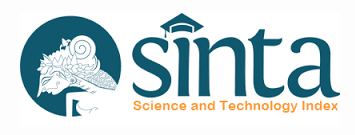DAKWAH MELALUI MEDIA SOSIAL FACEBOOK
Abstract
Facebook is a social media with the number of users in the world has created a new virtual space, in which everyone easily access anytime and anywhere can communicate with each other. The information can be spread freely through social media is certainly positive and negative impacts, hence the need for preachers to come pouring message of Islam in it for the creation of goodness and benefit. For those who possess a lot of friends and followers, have the opportunity to preach effectively and efficiently. Social media facebook has a full-featured and accessible so that effective and efficient if it is used as a medium of propaganda by leveraging the strengths. This is evidenced by the status of Islamic motivation and able to bring a positive response to its readers. A style that is good, decent and gentle as well as how to pack the words by presenting the words of the parable, the stories of the Prophet, character and personal experience to make writing into readable, easily understood, and is able to avoid feeling offended readers as well as avoid the debate. Among the preachers who use social media facebook this is Habib Muhammad Lutfi bin Yahya, KH. Abdullah Gymnastiar, CakNun.com, Gus Mus, Yusuf Mansur (Official), Ustadz M. Nur Maulana, Ustadz Felix Siauw, Pearl of Wisdom Ustadz Zaki (Dai TPI), Ustadz Ahmad Al-Ethiopia, Buya Yahya, Ustadz Wijayanto, Ustaz Nasir Bachtiar , Ustadzah Mamah Dedeh, Ustadz Muhammad Riza, Ary Gina Agustian, and others. Although not always the status on facebook can be understood by the reader, because the form of written language is not spoken, it could lead to interpretations that vary from readers, especially if you use words that are not public or mixed language (Indonesian, Javanese, Arabic) without given a detailed explanation. And clear, facebook has brought a lot of positive value for readers, and raises social effects that the birth of Islamic communities.
References
Bisri dkk, A. Mustofa. Cerita-Cerita Pengantin, (Yogyakarta: Galang Press, 2004).
Asep Saeful Muhtadi, Komunikasi Dakwah, (Bandung: Simbiosa Rekatama Media, 2012).
Pimay, Awaludin. Paradigma Dakwah Humanis, (Semarang : Rasail, 2005)
Asmaya, Enung Aa' Gym Da'i Sejuk Dalam Masyarakat Majemuk, (Jakarta: Hikmah, 2003).
Anshari, Hafi. Pemahaman dan Pengamalan Dakwah, (Surabaya: al-Ikhlas, 1993).
Kristanto, Hari. Skripsi Facebook Sebagai Media Komunikasi, (Surakarta: Universitas 11 Maret Surakarta, 2010).
Susanto, Hari. Generasi Muda Excellent, (Yogyakarta: Deepublish, 2014)
http://id.techinasia.com/jumlah-pengguna-facebook-q1-2015/
http://www.acerid.com/wpcontent/uploads/downloads/2011/05/guraru_bukuacer_preview.pdf
https://id. wikipedia.org/wiki/Emha_Ainun_Nadjib.
https://id.wikipedia.org/wiki/Abdullah_Gymnastiar.
https://id.wikipedia.org/wiki/Muhammad_Luthfi_bin_Yahya.
https://id.wikipedia.org/wiki/Mustofa_Bisri.
Betts, Ian L. Jalan Sunyi Emha, (Jakarta: Kompas, 2006).
Wahyu, Ilaihi Komunikasi Dakwah, (Bandung: Remaja Rosdakarya, 2010).
Gayo, Iwan. Buku Pintar Seri Junior, (Jakarta: Grasindo, 1985).
Syukur, M. Amin Pengantar Studi Islam, (Semarang: Bima Sejati, 2000).
Ali, M. Daud Pendidikan Agam Islam, (Jakarta: Rajawali Press, 2008).
Munir, M. Managemen Dakwah, (Jakarta: Kencana, 2006).
Aziz, Muhammad Ali Ilmu Dakwah, (Jakarta: Kencana, 2004).
Khatib, Pahlawan Kayo Manajemen Dakwah Dari Dakwah Konvensional Menuju Dakwah Profesional, (Jakarta: Amzah, 2007)
Muhammad, Rezky Facebook VS Friendster, (Yogyakarta; Connexi, 2009).
Amin, Samsul Munir Ilmu Dakwah, (Jakarta: Amzah, 2009)
Ridho, Syabibi. Metodologi Ilmu Dakwah (kajian ontologis dakwah ikhwan Al-Safa’), (Yogyakarta: Pustaka Pelajar dan STAIN Bengkulu, 2008).
Once an article was published in the journal, the author(s) are:
granted to the journal right licensed under Creative Commons License Attribution that allows others to share the work with an acknowledgment of the work's authorship. permitted to publish their work online in third parties as it can lead to wider dissemination of the work. continue to be the copyright owner and allow the journal to publish the article with the CC BY license receiving a DOI (Digital Object Identifier) of the work.





